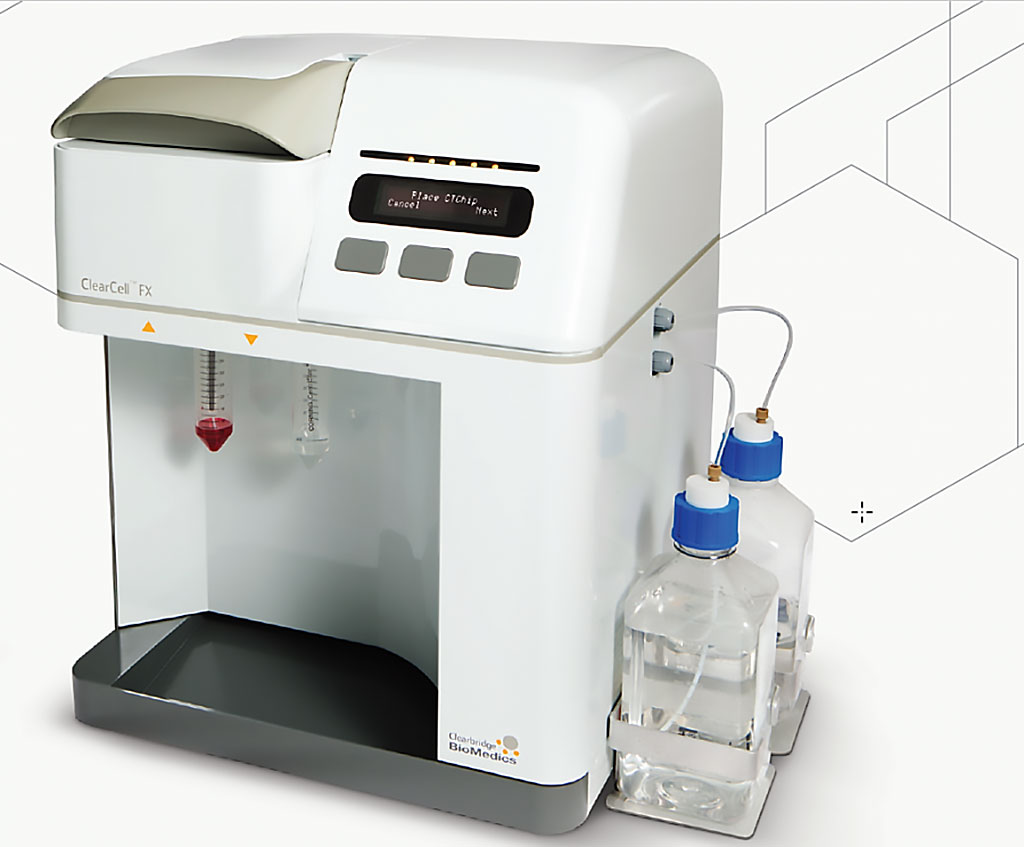Heterogeneous Populations of Melanoma Circulating Tumor Cells Detected
By LabMedica International staff writers
Posted on 02 Mar 2020
Circulating tumor cells (CTCs) can be assessed through a minimally invasive blood sample with potential utility as a predictive, prognostic and pharmacodynamic biomarker. The large heterogeneity of melanoma CTCs has hindered their detection and clinical application.Posted on 02 Mar 2020
A new way to detect melanoma cells circulating in the blood has the potential to significantly improve the monitoring of cancer patients and guide future treatment. Two platforms for the isolation and purification of melanoma circulating tumor cells (CTCs) from patient blood samples have been compared.

Image: The ClearCell FX1 novel platform for detect circulating tumor DNA from blood samples (Photo courtesy of Explorea s.r.o.).
An international team of scientists led by those at the Edith Cowan University (Perth, Australia) compared two microfluidic devices for the recovery of circulating melanoma cells. The presence of CTCs in 43 blood samples from patients with metastatic melanoma was evaluated using a combination of immunocytochemistry and transcript analyses of five genes by RT-PCR and 19 genes by droplet digital PCR (ddPCR), whereby a CTC score was calculated.
Circulating tumor DNA (ctDNA) from the same patient blood sample was assessed by ddPCR targeting tumor-specific mutations (Bio-Rad, Hercules, CA, USA). The two devices used were the Parsortix cell separation system (Angle, The Surrey Research Park, UK) and the ClearCell FX1 platform (Biolidics, Singapore).
Parsortix cell-sorting system uses microfluidic disposable cassettes to capture and harvest CTCs based on their less-deformable nature and larger size compared to other blood components. Captured cells can be fixed and stained for in-cassette identification and enumeration or can be recovered for external staining and molecular analysis with qPCR and other techniques. ClearCell FX1 system is a label-free liquid biopsy device that the firm says automates CTC isolation and enrichment and offers two different purity protocols. After lysing red blood cells in a blood sample, the platform passes the sample through its single-use CTChip FR1 microfluidic biochip to isolate CTCs from a white blood cell (WBC) background.
The team matched blood samples from 10 metastatic patients. Using immunostaining, the investigators saw that Parsortix produced, on average, a two-fold lower WBC background than produced by ClearCell. They detected CTCs in 30% of melanoma patient samples processed via both Parsortix (range of 1 to 13 CTCs) and ClearCell (range of 2 to 10 CTCs). Using RT-PCR, the group successfully detected at least one melanoma transcript in 40% and 60% of samples enriched by Parsortix and ClearCell, respectively. The study authors also found that ClearCell detected CTCs in samples that Parsortix did not identify and they noted that ClearCell-enriched fractions also showed a slightly higher abundance of detected transcripts compared to Parsortix-derived samples.
Comparing CTC fractions derived from 43 blood samples from the melanoma patients, the team detected CTCs via immunocytochemistry in 12 of the 43 samples. In addition, they saw that the CTCs varied in size, ranging from 10.2 µm to 68.3 µm. The study was published on February 10, 2020 in the British Journal of Cancer.
Related Links:
Edith Cowan University
Bio-Rad
Angle
Biolidics














